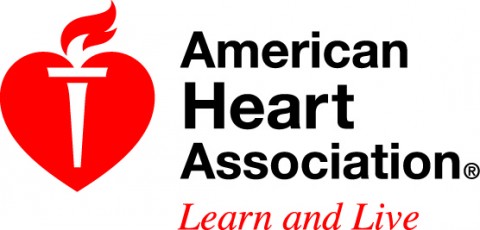Journal of the American Heart Association Report
 Dallas, TX – The slow and gentle movements of Tai Chi hold promise as an alternative exercise option for patients who decline traditional cardiac rehabilitation, according to preliminary research in Journal of the American Heart Association, the Open Access Journal of the American Heart Association/American Stroke Association.
Dallas, TX – The slow and gentle movements of Tai Chi hold promise as an alternative exercise option for patients who decline traditional cardiac rehabilitation, according to preliminary research in Journal of the American Heart Association, the Open Access Journal of the American Heart Association/American Stroke Association.
After a heart attack, more than 60 percent of patients decline participation in cardiac rehabilitation.

Although the reasons include financial concerns and distance to a rehab center, many patients stay away because they perceive physical exercise as unpleasant, painful or impossible given their current physical condition.
This is the first study suggesting that Tai Chi may improve exercise behaviors in this high-risk population.
“We thought that Tai Chi might be a good option for these people because you can start very slowly and simply and, as their confidence increases, the pace and movements can be modified to increase intensity,” said Elena Salmoirago-Blotcher, M.D., Ph.D., lead author of the study and assistant professor of medicine at the Warren Alpert School of Medicine at Brown University. “Tai Chi exercise can reach low-to-moderate intensity levels. The emphasis on breathing and relaxation can also help with stress reduction and psychological distress.”
Researchers adapted a Tai Chi routine for use in heart disease patients from a protocol previously used in patients with lung disease and heart failure. They compared the safety and compliance of two regimes: LITE, a shorter program with 24 classes over 12 weeks and PLUS, a longer program with 52 classes over 24 weeks. All participants received a DVD to use for home practice during and after receiving the classes.
The study was conducted at The Miriam Hospital in Providence, Rhode Island and included 29 physically inactive heart disease patients (8 women and 21 men, average age 67.9 years) who expressed an interest in a Tai Chi program.
Although the majority had experienced a previous heart attack (58.6 percent) or procedure to open a blocked artery (PCI – 82.8 percent; CABG – 31 percent), all had declined cardiac rehabilitation and continued to have many high-risk characteristics, including current smoker (27.6 percent), diabetes (48.3 percent), high cholesterol (75.9 percent), and overweight (35 percent) or obese (45 percent).
All had received physician clearance to undergo Tai Chi training and none had orthopedic problems (such as recent joint replacement surgery) that would preclude doing Tai Chi.
Researchers found Tai Chi:
- Was safe, with no adverse events related to the exercise program except for minor muscular pain at the beginning of training;
- Was well liked by participants (100 percent would recommend it to a friend);
- Was feasible, with patients attending about 66 percent of scheduled classes;
- Did not raise aerobic fitness on standard tests after 3 months of either the programs; and
- Did raise the weekly amount of moderate to vigorous physical activity (as measured by a wearable device) after three and six months in the group participating in the longer program, but not in those who took part in the shorter program.
“If proven effective in larger studies, it might be possible to offer it as an exercise option within a rehab center as a bridge to more strenuous exercise, or in a community setting with the educational components of rehab delivered outside of a medical setting,” Salmoirago-Blotcher stated.
Co-authors are Peter M. Wayne, Ph.D.; Shira Dunsiger, Ph.D.; Julie Krol, M.S.; Christopher Breault, B.S.; Beth C. Bock, Ph.D.; Wen-Chih Wu, M.D., M.P.H.; and Gloria Y. Yeh, M.D., M.P.H. Author disclosures are on the manuscript.
The National Center for Complementary and Integrative Health funded the study.
Additional Resources:
- AHA Heart Attack Website
- AHA Cardiac Rehab Site
- American Heart Association Recommendations for Physical Activity in Adults
- After Oct. 11, view the manuscript online
- After Oct. 11, view the editorial olnline
- Follow AHA/ASA news on Twitter @HeartNews
- For updates and new science from JAHA, follow @JAHA_AHA



